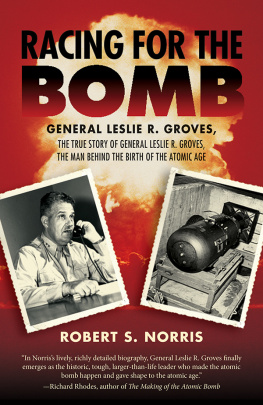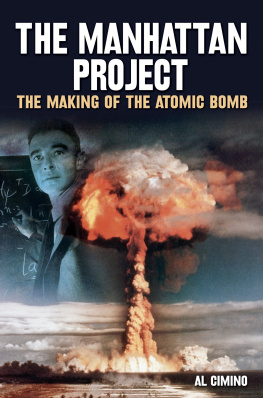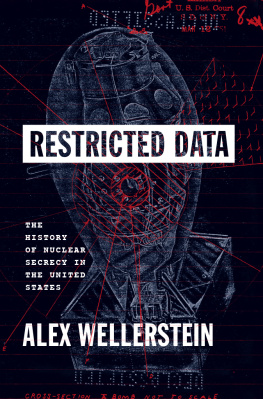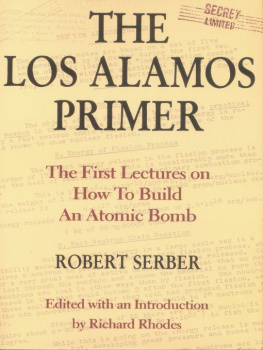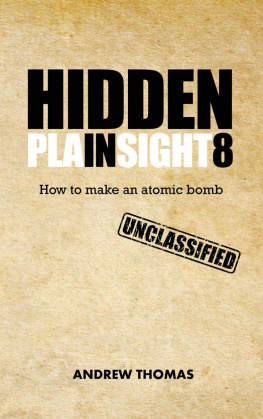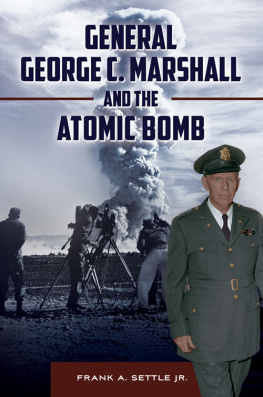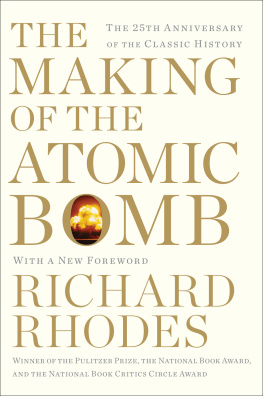TARGET HIROSHIMA




The latest edition of this work has been brought to publication with the generous assistance of Marguerite and Gerry Lenfest.
Naval Institute Press
291 Wood Road
Annapolis, MD 21402
1998 by Al Christman
All rights reserved. No part of this book may be reproduced or utilized in any form or by any means, electronic or mechanical, including photocopying and recording, or by any information storage and retrieval system, without permission in writing from the publisher.
First Naval Institute Press paperback edition published 2013
ISBN 978-1-61251-318-8 (eBook)
The Library of Congress has cataloged the hardcover edition as follows:
Christman, Albert B.
Target Hiroshima : Deak Parsons and the creation of the atomic bomb / Al Christman
p. cm.
Includes bibliographical references and index.
1. Parsons, William Sterling, 1901-1953. 2. AdmiralsUnited StatesBiography. 3. United States. NavyBiography. I. Title.
V63.P35C47 1998
359.0092dc21
98-2553

 Print editions meet the requirements of ANSI/NISO z39.48-1992 (Permanence of Paper).
Print editions meet the requirements of ANSI/NISO z39.48-1992 (Permanence of Paper).
9 8 7 6 5 4 3 2 1
Frontispiece: Foreground figures in shipboard scene at Bikini (left to right): Vice Adm. W. H. P. Blandy, commander, Operation Crossroads; Rear Adm. William Parsons, deputy commander for Technical Directions; Roger Warner, Los Alamos leader for bomb assembly; and Maj. Gen. William Kepner, deputy commander for Air Operations (Harlow W. Russ, Los Alamos Historical Museum)
The following publishers have granted permission to quote from copyrighted works:
Curtis Brown, Ltd.: From Seven Hours to Zero, by Joseph L. Marx.
1967 by Joseph L. Marx
Kluwer Academic Publishers: From Reminiscences of Los Alamos, 19431945, edited by Lawrence Badash, Joseph Hirschfelder, and Herbert Broida.
1980 by D. Reidel Publishing Co., Dardrecht, Holland
Simon and Shuster, Inc.: From The Making of the Atomic Bomb, by Richard Rhodes.
1986 by Richard Rhodes
William Morrow and Co., Inc.: From Pieces of the Action, by Vannevar Bush.
1970 by Vannevar Bush
Contents
T hirty-two years ago I began the quest to separate Deak Parsons the man from Captain Parsons the wartime legend. Between 1965 and 1971 I interviewed forty former Parsons associates about his unusual naval career, including his leading roles in the three military-scientific programs crucial to American victory in World War II: radar, the proximity fuze, and the atomic bomb. Among those interviewed were Vannevar Bush, the chief mobilizer of science for the war; Lt. Gen. Leslie Groves, director of the Manhattan Project; and most of the Los Alamos scientists and officers who worked with Parsons in the weaponization and overseas assembly of the wartime bombs.
The interviews confirmed that Deak Parsons was indeed, as some described him, a new breed of officer, a breed much needed in the expanded military technology of the nuclear age. Even so, there was little possibility of producing a Parsons biography at that time. Most of the records that could give substance to his achievements remained classified for security reasons. Moreover, the interviewing on Parsons had been conducted as an adjunct to research for the history I was writing of the Naval Weapons Center, China Lake. While the work on the China Lake history continued, the research on Parsons ended with the interviews. My task was completed when I furnished tapes and transcripts of the Parsons interviews to the Naval Historical Centers Operational Archives, where they are preserved for posterity and are available for scholars. At least, I believed that my work was over.
However, two decades later, following my government retirement, I crossed paths with Vice Adm. F. L. Ashworth, USN (Ret.), one of the principal persons interviewed earlier. We were scarcely through dinner before he struck a nerve. He said, The Parsons story still needs to be told, now more than ever. I agreed to at least try an article and soon after queried Naval History magazine. The editor, then Paul Stillwell, replied, First the article, then the book.
In several important ways the three-decade delay between start of interviews and completion of book has enhanced the final biography. Many of the interviews would be unavailable today. Conversely, crucial records not available then have been declassified in recent years.
In addition, the delay has improved our perspective on the technological advances of Deak Parsons day. In particular, the radiation hazards and the moral issues of the atomic bomb are seen in a more discerning light now than when still under the shadow of World War II. These issues, plus revisionist efforts to reshape nuclear history, make it all the more important to examine the circumstances that brought the atomic bomb into being and into combat use.
In the Parsons odyssey we view the World War II landscape from the perspective of the military officer who worked most intimately with the Los Alamos scientists. We accompany him as he plans for and then takes charge of the overseas assembly of the combat bombs. We accompany him as bomb commander on the Hiroshima mission. We enter the nuclear age with Parsons as the Atomic Admiral who did the initial planning for Operation Crossroads and then provided technical direction in its execution. Through him we see the problems, the possibilities, and the limitations not only of nuclear energy but of other technological advances that came out of the World War II scientific mobilization.
The search for Parsons the manand the basis for his effectivenesshas been more difficult than tracking his military and scientific achievements. He was interested in results, not personal credit. Only in letters to family and close friends did he allow glimpses of the inner man. His uncommon brilliance and intense commitment to mission explain much. But his reputation for success, sometimes seen as the Midas touch, is also explained by his natural way of working with fellow officers as shipmates, whether at sea or ashore, and with scientists as equal partners. He was a network man before the word gained its current meaning. The challenge of this biography has been to illuminate the personal strengths that Parsons himself hid through innate modesty.
Next page

